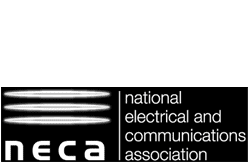IoT-Based Lighting Controls for Modern Office Buildings by Electroscope
29 October 2024
IoT-based lighting controls combine LED lighting fixtures, sensors, and network connectivity to create an intelligent lighting ecosystem. These systems utilise Internet of Things (IoT) technology to enable remote monitoring, automation, and data-driven decision-making for commercial lighting management.
Key Components of Smart Lighting Systems
- Smart Fixtures and Sensors
- LED lights with built-in wireless connectivity
- Occupancy and motion sensors
- Daylight harvesting sensors
- Temperature and environmental monitors
- Energy consumption metres
- Network Infrastructure
- Wireless protocols (WiFi, Bluetooth, Zigbee)
- Gateway devices for data transmission
- Cloud-based management platforms
- Secure communication channels
Benefits of IoT Lighting Controls Implementation
The implementation of IoT lighting controls delivers a powerful trifecta of advantages for modern office buildings. Studies show these systems can reduce energy consumption by up to 75% through automated dimming and daylight harvesting, whilst significantly lowering operational costs through predictive maintenance and extended equipment lifecycle. Beyond the financial benefits, smart lighting creates an optimal work environment where employees can personalise their workspace illumination, leading to improved visual comfort, enhanced concentration, and increased productivity. The system’s ability to maintain consistent, high-quality lighting throughout the day, combined with its reduced carbon footprint and integration with natural light, makes it an invaluable investment for forward-thinking organisations.
Enhanced Workplace Experience
Smart lighting plays a crucial role in creating an optimal work environment that promotes employee well-being and productivity. Through personalised lighting control and natural light integration, employees can adjust their workspace illumination to match their preferences and tasks. This customisation leads to improved visual comfort and concentration, ultimately boosting workplace satisfaction and efficiency. The system’s ability to maintain consistent, high-quality lighting throughout the day helps reduce eye strain and fatigue, contributing to a healthier work environment.
Implementation Strategy
Successfully implementing IoT lighting controls requires a thoughtful, phased approach. Begin with a thorough assessment of your current lighting infrastructure and specific building requirements, establishing clear objectives and KPIs whilst calculating potential ROI. The system design phase focuses on selecting appropriate hardware components and planning network infrastructure, ensuring scalability for future expansion. During installation and configuration, professional teams handle the physical setup, network security measures, system programming, and user interface customisation, creating a seamless transition to the new lighting system.
Best Practices for Operation
Maintaining an efficient IoT lighting system demands consistent attention to monitoring and maintenance protocols. Regular system monitoring involves tracking energy consumption patterns and analysing occupancy data to optimise performance and generate actionable insights. A proactive maintenance approach includes routine inspections, timely software updates, and prompt issue resolution, all documented for future reference. Comprehensive staff training ensures all users understand system operations, with clear guidelines and support protocols in place for smooth daily operation.
Integration Capabilities
Modern IoT lighting systems can integrate with:
- Building Management Systems (BMS)
- HVAC controls
- Security systems
- Emergency response systems
Future Trends
The future of IoT lighting controls includes:
- AI-powered optimisation
- Enhanced sensor capabilities
- Improved wireless protocols
- Greater integration options
IoT-based lighting controls represent a significant advancement in building management technology. Whilst the initial investment may be substantial, the long-term benefits in terms of energy savings, operational efficiency, and workplace enhancement make it a worthwhile investment for modern office buildings.
Ready to implement IoT lighting controls in your facility? Contact Electroscope Electrical Contractors to explore solutions tailored to your building’s needs.
Optimized by: Netwizard SEO


